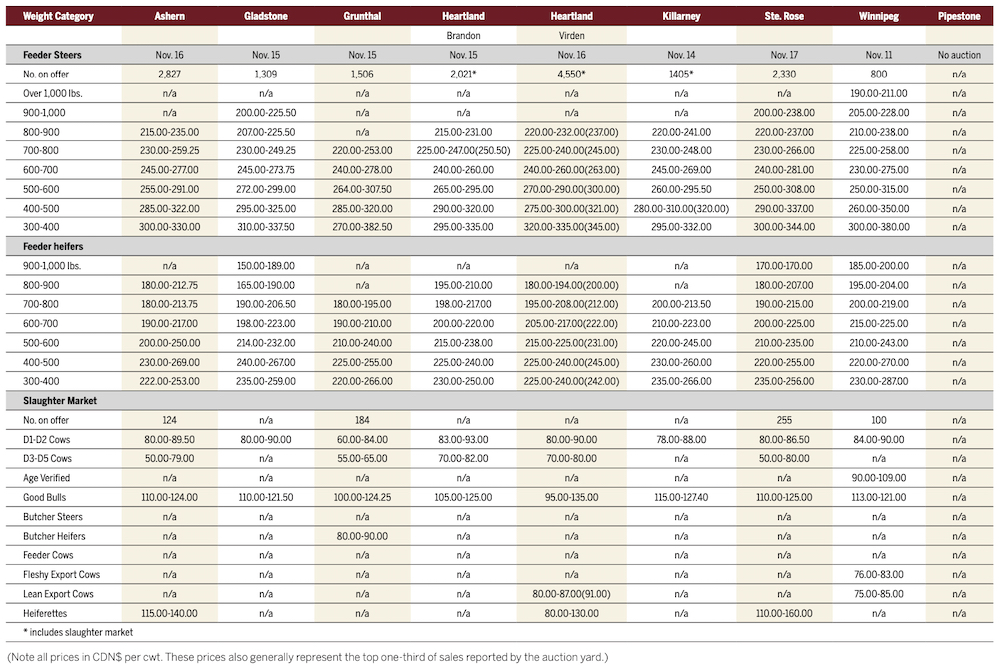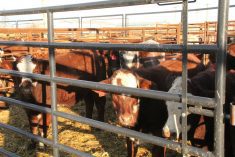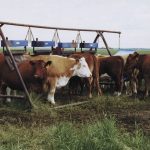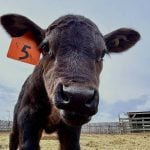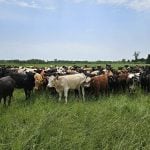The number of cattle being sold at Manitoba’s auctions remains high and the fall run is set to push into December, according to Tyler Slawinski, auctioneer at the Gladstone and Ashern auction marts.
“The rush is still on. The numbers are high right across the province,” Slawinski said, noting that despite a few cancellations, the Gladstone sale had more than 1,300 head on Nov. 15 and is booked to its capacity of 1,500 for Nov. 22.
The Killarney Auction Mart said in its weekly report that it is fully booked for its next sale on Nov. 21. The Ste. Rose Auction Mart will likely be at capacity too, with space for a few hundred more cattle.
Read Also

Canola market sees up and down week
Canola futures endured a topsy-turvy week ended July 17, 2025, with most ICE contracts seeing net gains of about C$15 per tonne.
“We were blessed with an extended fall, which kind of drove along the rush from happening the same time the previous year, due to the drought and the lack of feed,” Slawinski said.
[RELATED] Feed weekly outlook: Grain prices expected to hold firm
Given severe conditions in 2021, cattle auctions such as Ashern cut short their time off during summer to help producers unload cattle. In some areas of Manitoba, especially the Interlake, pastures dried up and feed was difficult to find. Those sales cut into the number of cattle that otherwise would have been auctioned that fall.
With ample amounts snow last winter, plus lots of rain in spring, the situation in the province reversed itself.
“There’s probably more cattle being marketed this fall than what we would probably see over the winter and in the spring,” Slawinski said, adding that good calf prices are also propelling the extended fall run.
“There’s no doubt about it that the exceptional calf price is holding the fall run steady. We’re seeing calf prices now exceeding those right off the cow, where we would see backgrounded calves sell for last spring. It is very appealing,” Slawinski said.
Prices will fluctuate in the New Year, he added.
“It’s all going to depend on the Canadian dollar and what can be exported south. The cost of production and the cost of feed are very strong, even if the cattle prices are strong. It still takes a lot to feed those calves and put those pounds on.”
Another factor helping keep cattle prices high, he said, is the declining number of animals available in Manitoba and across Canada.
“It’s probably the lowest we have seen in several years.”
Slawinski also pointed to the reduced number of producers. He said the average age is quite high and it’s difficult for a young person to start a cattle operation, especially when they aren’t taking over an established ranch.






